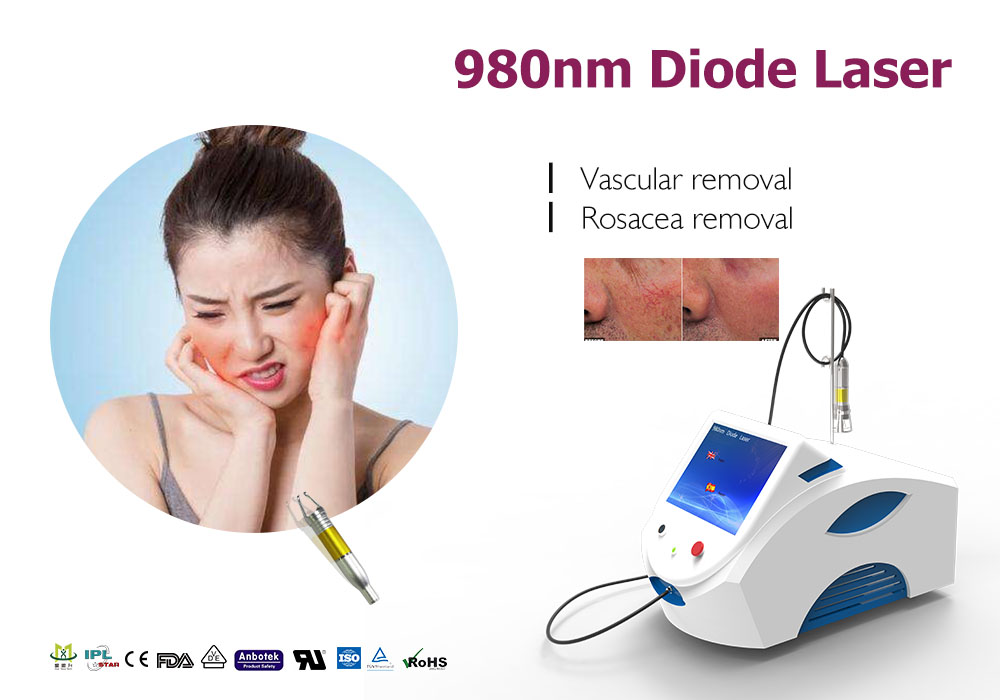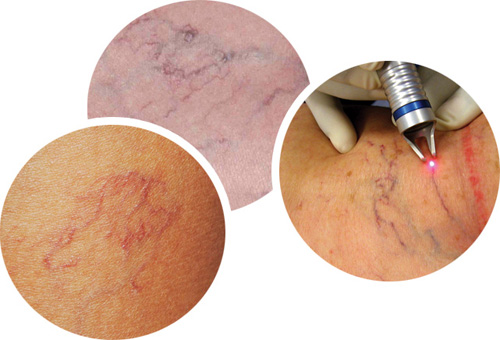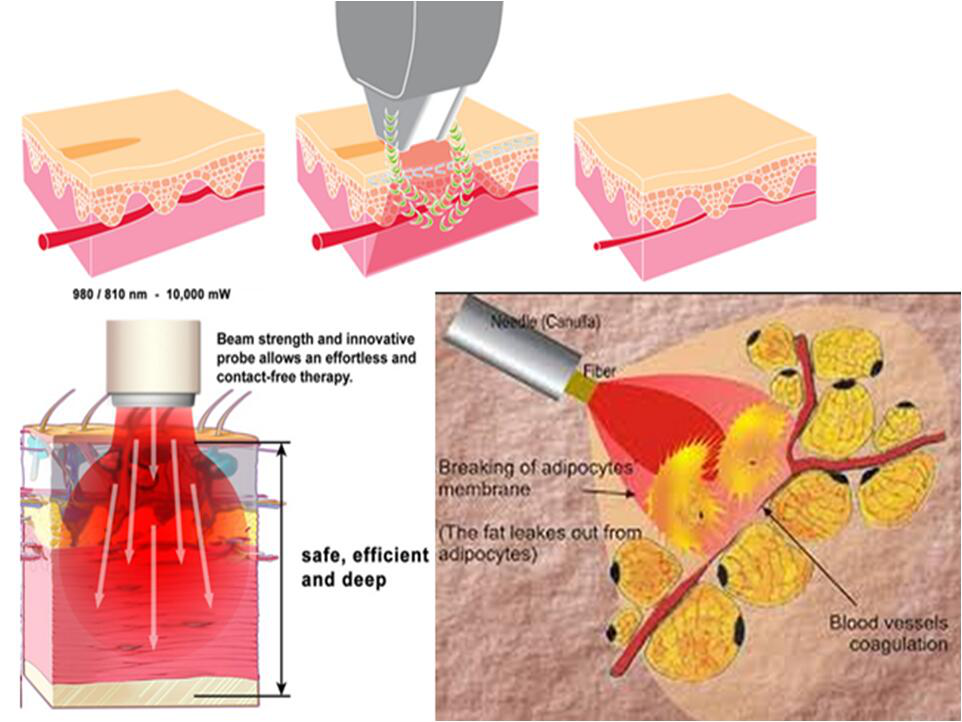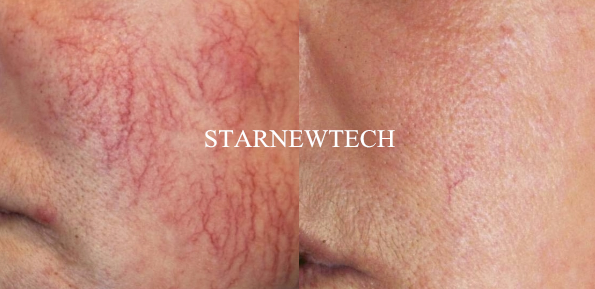07月15 Everything You Need to Know About Blood Vessel Removal
Have you noticed little red lines creeping and crawling across your skin? This bothersome network can be attributed to broken blood vessels — also known as telangiectasia, broken capillaries, and spider veins. Once they make an appearance, these tricky, thread-like nuisances don’t always go away on their own. In fact, they can actually increase in number over time, causing your skin to take on a ruddy, blotchy appearance.
Luckily, dermatologists can zap these broken blood vessels into oblivion. Here, we explore what causes blood vessels to “break” and the treatments that help stop this unsightly network from growing.

What causes broken blood vessels?
Technically, these blood vessels don’t “break.” Prolonged UV exposure, genetics, and the natural aging process — cause the walls of your healthy blood vessels to atrophy (that’s the scientific word for stop working) and dilate.
Dilation is a sudden widening and constricting that makes your blood vessels become visible under the skin. But it doesn’t stop there. Increased estrogen hormones during pregnancy, the skin condition rosacea, injuries that cause bruising, excessive heat through weather changes or exercise, and exposure to chemical irritants can also dilate blood vessels. We hate to be Debbie downers, but on top of that, alcohol consumption, even when moderate, can contribute to broken blood vessels, and severe binge drinking can worsen the condition. Even vomiting or violently sneezing can create intense pressure in your face, causing blood vessels to dilate and break! Because there’s a laundry list of potential causes for a capillary to “burst,” we advise that you visit your dermatologist to determine the underlying condition and can figure out your best mode of treatment.
Who is a candidate for laser treatment?
There are no absolute reasons as to why one cannot undergo laser therapy. However. one should:
Be in good physical health
Preferably a nonsmoker
Is realistic about the procedure and results
Has no disease of the blood vessels or problems with bleeding
All patients are evaluated prior to laser therapy. Spider veins usually do not cause symptoms and are a cosmetic concern only. For those who do have symptoms, further investigation is done to assure you do not have varicose veins or other underlying reasons for your spider veins. Laser therapy is most effective for the very small spider veins and not used to treat varicose veins unless done with a laser fiber inside the vein (See Endovenous Laser Therapy) .

Is laser therapy painful?
The majority of individuals do not require any type of anesthesia, but for those who are squeamish or anticipate pain, a topical anesthetic can be applied approximately one-and-a-half hour prior to the procedure. You may feel a slight burning or stinging sensation as the laser penetrates your skin and many patients liken the feeling to a rubber band snapping on the skin.
However, because of the fact that we are all different and respond differently to stimuli, it is important to be aware that there may be discomfort associated with the use of some laser treatments. We have seen this range from the patient who “feels nothing” at whatever level of energy is used to those who feel the discomfort even before the laser is fired. Since most laser treatments will require a certain number of sessions, it is important for you to know your comfort zone. All the possibilities will be discussed with you, you will be given every opportunity to ask questions and have them answered and given various choices that will provide you with a greater degree of comfort during the treatment.

How often can therapy be repeated?
It is generally recommended that the treatments be spaced four to six weeks apart. If new veins appear, additional treatments are required for optimum results.
What are advantages of laser over sclerotherapy?
It can be used to treat veins too tiny to enter with a needle
It can be used for spider veins that look like wagon wheels resulting from high pressure centers
Recovery may be more immediate
Downtime is slightly less

Laser therapy can be used on the face




No Comments